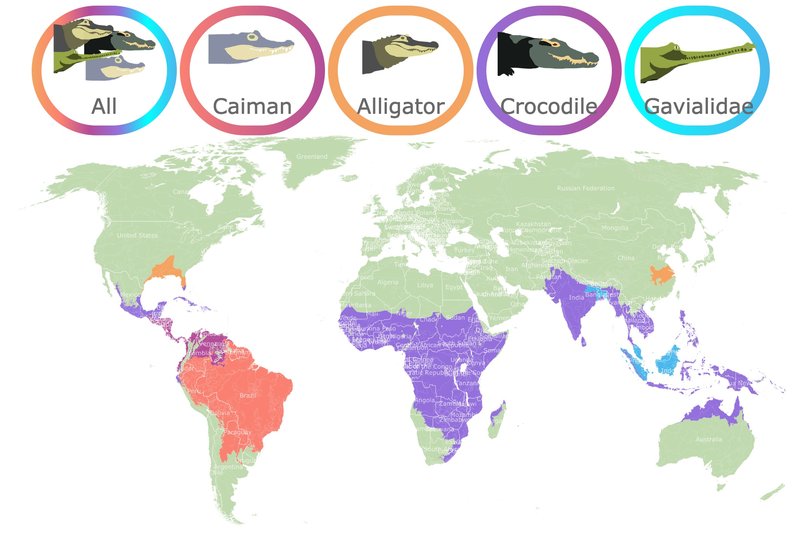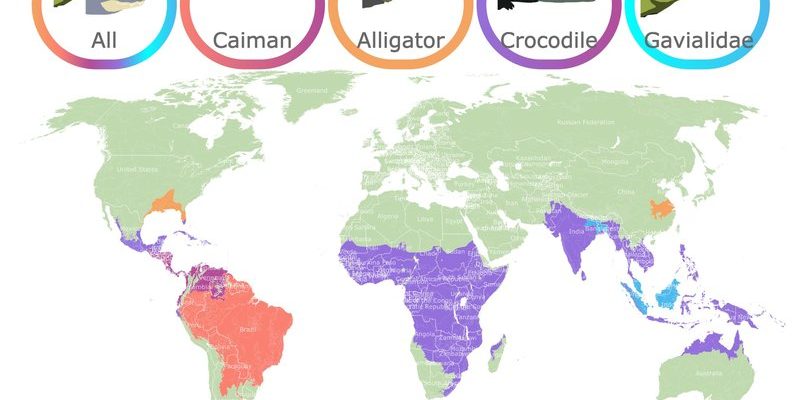
When we talk about crocodiles, it’s important to know that they aren’t all hanging out in one place. These reptiles have established themselves in different regions around the globe. From the swamps of the Americas to the rivers of Africa and the lagoons of Asia, crocodiles are truly widespread. Let’s dive deeper into the specific places where these remarkable animals make their homes.
Understanding Crocodile Habitats
Crocodiles are *semi-aquatic*, meaning they spend a good amount of their time both in water and on land. Their habitats typically include rivers, lakes, wetlands, and even some coastal regions. What’s particularly interesting is that different species of crocodiles prefer different environments. For example, the American crocodile enjoys brackish waters, while the Nile crocodile prefers freshwater rivers and lakes.
Their adaptability is quite astounding; they can thrive in various climates, ranging from tropical to subtropical. So, whether you’re exploring the dense mangroves of the Caribbean or the marshes of Southeast Asia, there’s a good chance you’ll encounter a crocodile or two.
Crocodiles in Africa
Africa is home to a variety of crocodile species, with the Nile crocodile being the most famous. Found in almost every sub-Saharan country, these crocodiles are often spotted lounging on riverbanks or basking in the sun. The Nile River is one of their primary habitats, a place where they hunt fish, birds, and even small mammals.
You might be wondering why the Nile crocodile is so well-adapted to this environment. It’s simple: they have a strong, streamlined body for swimming and powerful jaws for catching prey. Plus, they can stay submerged for long periods, making them effective ambush hunters. Watching a Nile crocodile dash out of the water for a meal is a sight to behold!
Crocodiles in Asia
Moving over to Asia, we find the Saltwater crocodile, famously known for being one of the largest reptile species on Earth. These giant crocs can be found in countries like India, Indonesia, and Australia. Interestingly, they’re called “saltwater” because they can tolerate saltwater, allowing them to roam along coastal areas and even venture into the open ocean.
The habitats of saltwater crocodiles are quite varied. They thrive in estuaries, mangrove swamps, and river mouths. Their adaptability to both freshwater and saltwater environments is remarkable. Many coastal communities near these habitats often have stories about encounters with these massive reptiles, ranging from awe to fear!
Crocodiles in the Americas
In the Americas, the American crocodile reigns supreme. They’re mostly found in the coastal areas of southern Florida, the Caribbean islands, and along both coasts of Central America. The American crocodile tends to prefer brackish water, thriving in mangroves and coastal lagoons.
These crocodiles are a bit more shy compared to their other relatives, often remaining elusive and lurking in the shadows. But, they’re equally as fascinating! Their pale skin helps them blend into the sandy shores, allowing them to ambush unsuspecting prey. You might find them sunning themselves on rocks or basking in the sun—just like us at the beach!
Crocodiles in Australia
Down under, Australia is home to several unique crocodile species, including the Freshwater crocodile and the formidable Saltwater crocodile. The freshwater variety mainly inhabits rivers, lakes, and billabongs, while the saltwater version can be found in more coastal areas.
Australia is known for its rich wildlife, and crocodiles play a crucial role in their ecosystems. They help control fish populations and maintain healthy waterways. Fascinatingly, in some regions, there are even guidelines issued for humans to safely coexist with these reptiles, ensuring the safety of both the animals and people.
The Role of Crocodiles in Ecosystems
Crocodiles are often misunderstood, but they serve important roles in their habitats. They act as apex predators, keeping the populations of various species in check. This helps maintain a balanced ecosystem. If you remove crocodiles from their environment, you may end up with overpopulation of certain fish or other species, leading to ecological issues.
Additionally, their nesting habits create habitats for other creatures. When female crocodiles dig nests and lay eggs, they inadvertently provide a safe haven for certain plants and animals that thrive in those areas. It’s a fine example of how interconnected life can be; one species’ actions can benefit many others.
Conservation and the Future of Crocodiles
Unfortunately, many crocodile species are threatened due to habitat loss, poaching, and climate change. Conservation efforts are critical to ensuring these amazing reptiles continue to thrive. Efforts range from habitat preservation to establishing protected areas where crocodiles can live safely without human interference.
People are also becoming more aware of the importance of these creatures. Educational programs and ecotourism initiatives aim to foster respect for crocodiles, encouraging people to appreciate them from a safe distance. Honestly, learning about their roles and strengths helps demystify them and highlights their importance in our ecosystems.
So, where are crocodiles found around the world? From the winding rivers of Africa to the coastal waters of Australia and the lush mangroves of the Americas, crocodiles are truly global creatures. They may look intimidating, but they play essential roles in our ecosystems. Understanding their habitats and behaviors helps foster appreciation for these magnificent reptiles.
Whether you’re a wildlife enthusiast or simply curious, knowing where crocodiles live and how they interact with their environments makes their stories even more intriguing. Let’s continue to respect and protect these ancient reptiles, ensuring their survival for future generations.

